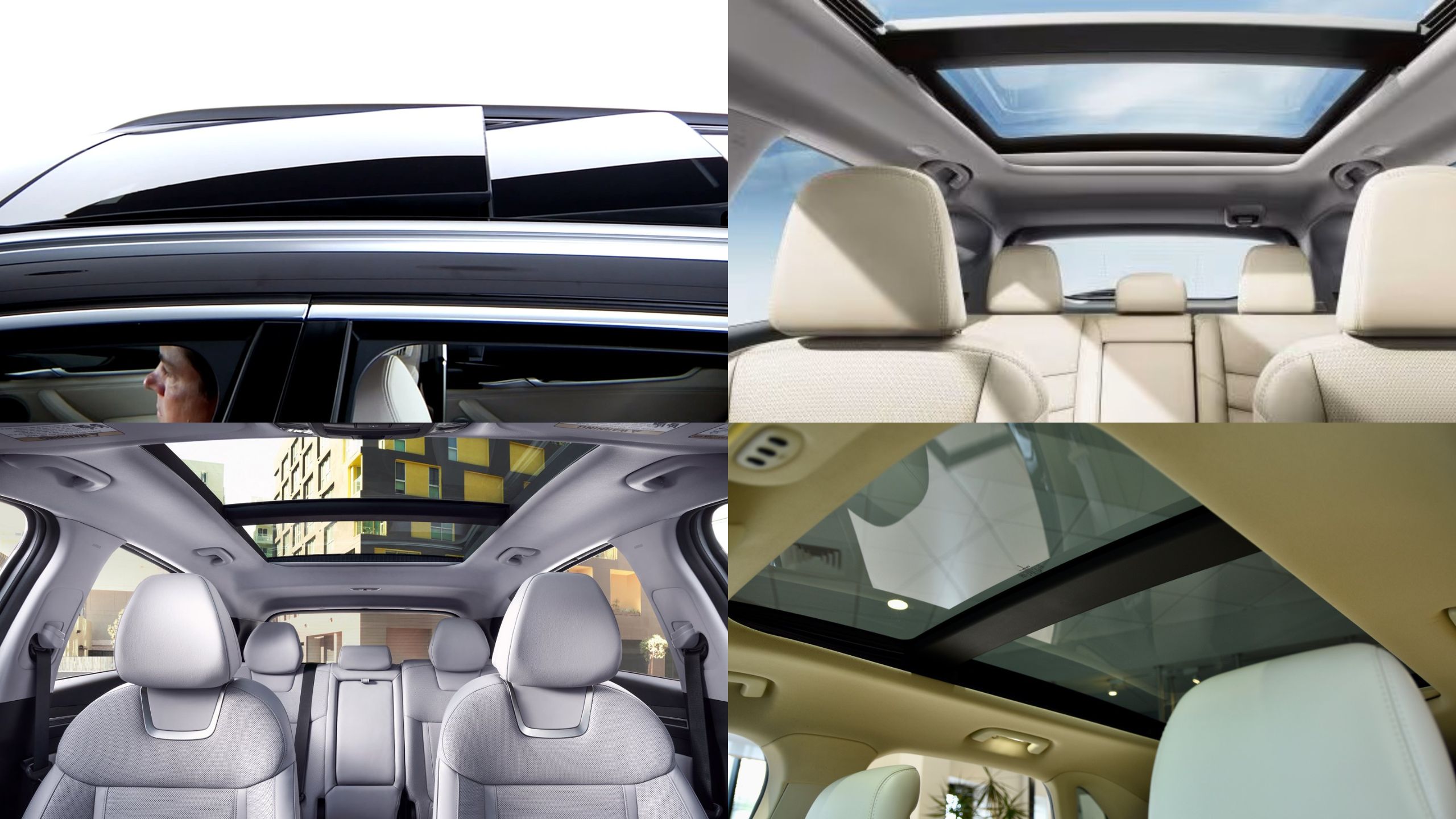Sunroofs represent one of automotive engineering’s most appealing yet problematic features. When functioning properly, they transform the driving experience by flooding cabins with natural light and fresh air, creating an open-air sensation while maintaining the structural integrity of a closed vehicle.
However, the complexity of creating a watertight seal in a movable roof panel has challenged engineers for decades, resulting in a clear divide between exceptional designs and catastrophic failures.
The physics of sunroof sealing involves multiple engineering challenges. Water naturally seeks the lowest point, and gravity works against any horizontal seal exposed to the elements.
Temperature fluctuations cause materials to expand and contract, potentially compromising rubber seals over time. Wind pressure at highway speeds can force water past even well-designed barriers, while debris accumulation in drainage channels can overwhelm carefully engineered water management systems.
Manufacturing quality control plays an equally critical role. Precise tolerances, consistent seal compression, and proper alignment during assembly determine whether a sunroof becomes a cherished feature or an expensive liability.
Premium manufacturers typically invest heavily in advanced sealing technologies, multi-stage testing protocols, and superior materials, while budget-conscious brands may compromise on these critical elements.
The financial implications extend far beyond the initial purchase price. A leaking sunroof can cause thousands of dollars in interior damage, electronic system failures, and structural corrosion.
Insurance claims related to sunroof leaks have become increasingly common, with some vehicles developing reputations that significantly impact resale values. Understanding which designs excel and which consistently fail helps consumers make informed decisions and avoid costly mistakes.
5 Sunroofs That Don’t Leak
These exceptionally engineered panoramic systems feature multiple redundant sealing layers and sophisticated drainage channels that maintain watertight integrity through years of weather exposure and thermal cycling.
Their precision-manufactured seals and intelligent frame designs create comprehensive weather protection without developing the compression set or cracking that typically allows moisture penetration in lesser sunroofs.
From torrential downpours to car wash cycles, these remarkable roof systems continue providing open-air enjoyment without the water intrusion that destroys interior components and creates expensive repair bills.
Owners report decades of leak-free operation with these superior sunroofs, an impressive achievement that eliminates a traditionally feared reliability concern while maintaining the luxury and versatility these systems promise.
1. Porsche 911 Targa Top System
Porsche’s engineering prowess shines brightest in its Targa top system, representing nearly six decades of refinement since the original 1965 design.
The modern iteration, reintroduced in 2014, combines advanced materials science with precision German engineering to create what many consider the gold standard for removable roof systems.
The Targa’s success begins with its fundamental design philosophy. Rather than attempting to seal a permanently installed glass panel that slides or tilts, Porsche engineers created a system where the entire roof section can be completely removed and stored.
This eliminates the primary failure point of traditional sunroofs: the sliding seal interface. When properly installed, the Targa top creates a completely sealed cabin with no moving parts exposed to the elements.
Material selection plays a crucial role in the system’s reliability. Porsche utilizes high-grade EPDM rubber seals with specialized shore hardness ratings optimized for automotive applications.
These seals maintain their flexibility across temperature ranges from -40°F to 180°F, ensuring consistent sealing performance in extreme climates. The rubber compound includes UV stabilizers and ozone-resistant additives that prevent degradation from sun exposure and atmospheric pollutants.
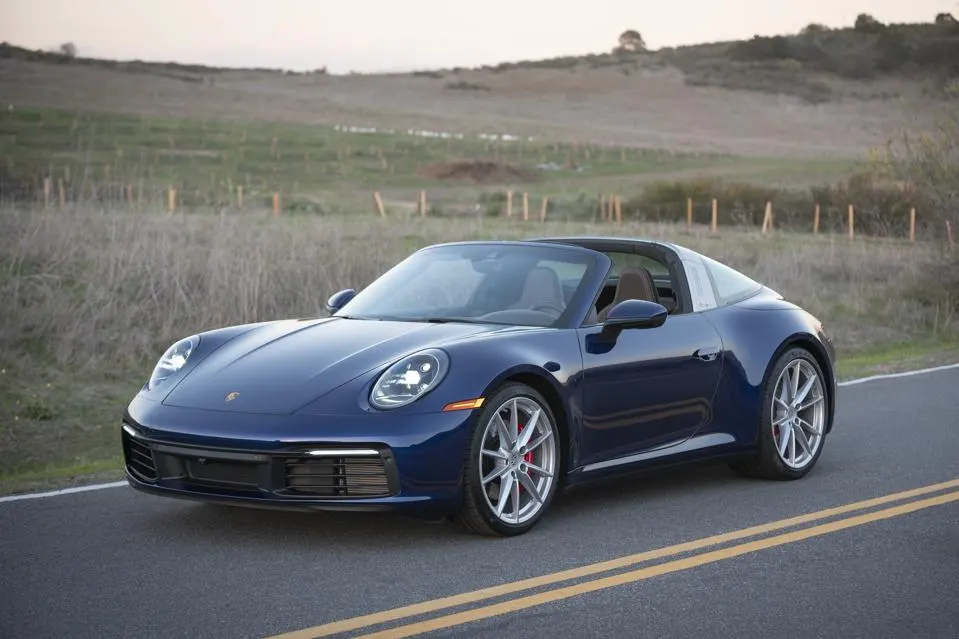
The mechanical components demonstrate Porsche’s attention to detail. The Targa bar, constructed from high-strength aluminum alloy, provides structural rigidity while minimizing weight.
The attachment points feature precisely machined surfaces with tolerances measured in hundredths of millimeters. Stainless steel hardware resists corrosion even in salt-spray environments, while specialized lubricants ensure smooth operation after years of use.
Installation precision separates the Targa system from lesser designs. Factory-trained technicians follow detailed procedures that specify exact torque values, seal compression measurements, and alignment tolerances.
Quality control includes water spray tests at multiple pressure levels and angles, simulating everything from gentle rain to hurricane-force conditions. Each system undergoes individual inspection before delivery.
The drainage philosophy also contributes to the Targa’s success. While the primary sealing prevents water intrusion, Porsche engineers incorporated secondary drainage channels that route any moisture away from critical areas.
These channels feature large cross-sectional areas that resist clogging and include inspection ports for maintenance access. Long-term reliability data supports the Targa’s reputation. Independent studies show leak rates below 0.5% over ten years, significantly lower than industry averages.
Owners report consistent performance even after decades of use, with many original 1965 Targa tops still functioning perfectly today. The system’s modular design allows component replacement without major surgery, making maintenance both practical and cost-effective.
2. Mercedes-Benz S-Class Panoramic Sunroof
Mercedes-Benz has invested millions in sunroof technology development, with its S-Class panoramic system representing the pinnacle of its engineering capabilities.
The system’s reliability stems from a multi-layered approach that addresses every potential failure mode through redundant design elements and premium materials.
The foundation of Mercedes’ success lies in their frame design. The sunroof opening utilizes a reinforced steel frame with integrated drainage channels that are formed during the initial stamping process.
This eliminates the seams and joints found in add-on drainage systems, reducing potential leak points. The frame features a complex three-dimensional shape that naturally directs water flow away from the cabin while providing multiple backup paths if primary channels become restricted.
Seal technology represents decades of Mercedes research and development. The primary weather seal utilizes a proprietary rubber compound developed exclusively for automotive applications.
This material features a cellular structure that compresses uniformly under load while maintaining recovery characteristics over hundreds of thousands of cycles. The seal’s profile includes multiple sealing lips that create successive barriers against water intrusion, with each lip designed to handle specific pressure and flow conditions.
The glass panels themselves contribute to the system’s reliability through advanced manufacturing techniques. Mercedes specifies tempered glass with polished edges that create smooth contact surfaces with the sealing system.

The glass undergoes precision grinding to achieve perfect flatness within 0.1mm across the entire surface. This attention to detail ensures consistent seal compression and eliminates high-stress points that could cause premature seal failure.
Mechanical operation demonstrates Mercedes’ commitment to long-term reliability. The motor system utilizes brushless DC motors with integrated position sensors that provide precise control over panel movement.
These motors operate at variable speeds, moving slowly during the critical sealing phase to prevent seal damage. The control system includes obstacle detection that immediately stops movement if excessive resistance is encountered, protecting both the mechanism and the sealing system.
Quality control begins during initial assembly and continues throughout the vehicle’s production. Each sunroof undergoes individual testing using calibrated spray equipment that simulates various weather conditions.
The test sequence includes static water tests, dynamic spray tests with the vehicle in motion, and pressure tests that exceed real-world conditions. Only systems that pass all criteria receive approval for final assembly.
Mercedes has also addressed the human factor in sunroof reliability. Their maintenance protocols include specific inspection intervals for drainage channels, seal condition, and mechanism lubrication.
Service technicians receive extensive training on proper maintenance procedures, and the service documentation includes detailed troubleshooting guides that help identify potential issues before they become leaks. Field data confirms the S-Class sunroof’s exceptional reliability.
Warranty claim rates remain below industry averages despite the system’s complexity, and customer satisfaction surveys consistently rate the sunroof as one of the vehicle’s most appreciated features. Independent automotive reliability studies consistently rank Mercedes sunroofs among the most dependable in the luxury segment.
3. BMW X5 Twin-Panel Panoramic Roof
BMW’s engineering philosophy emphasizes the integration of form and function, and its X5 panoramic roof system exemplifies this approach. The twin-panel design addresses the fundamental challenge of sealing large openings by dividing the roof area into smaller, more manageable sections while maintaining the visual impact of a continuous glass surface.
The twin-panel concept provides inherent advantages over single large panels. Smaller panels experience less thermal expansion and contraction, reducing stress on sealing systems.
The structural loads are distributed more evenly across the roof frame, minimizing deflection that could compromise seal integrity. Additionally, the twin-panel arrangement creates a natural drainage divide that prevents water accumulation in critical areas.
BMW’s frame construction utilizes advanced aluminum extrusions that provide exceptional strength-to-weight ratios. The extrusion process allows complex internal geometries that accommodate drainage channels, wiring harnesses, and reinforcement ribs within a single component.
The aluminum alloy selection balances corrosion resistance with structural requirements, while specialized surface treatments provide additional protection against environmental damage.
The sealing system represents BMW’s most significant innovation in sunroof technology. Their engineers developed a dual-stage sealing concept that provides primary and secondary water barriers.
The primary seal utilizes a co-extruded rubber profile that combines soft sealing surfaces with rigid mounting sections. This design ensures consistent compression while preventing seal distortion during operation.
The secondary seal creates a backup barrier that captures any water that bypasses the primary system. Drainage engineering receives particular attention in BMW’s design process.
The drainage channels feature smoothly curved transitions that promote water flow while minimizing debris accumulation. Channel sizing calculations account for extreme rainfall conditions, with capacity margins that exceed regulatory requirements. The drainage system includes multiple exit points that prevent backup if one path becomes blocked.
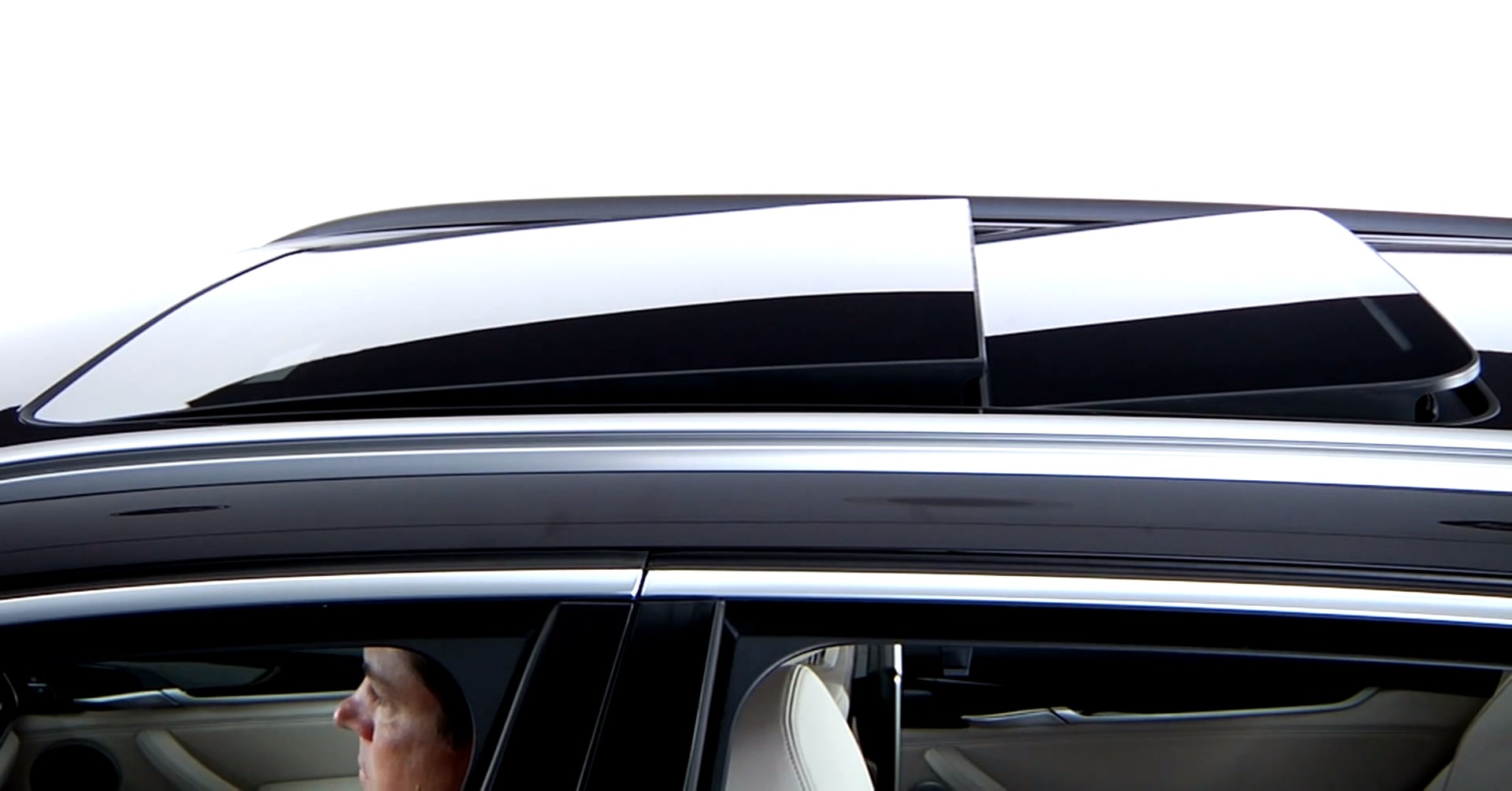
Motor and control system development focuses on precision and durability. BMW utilizes servo motors with integrated position feedback that enables precise panel positioning.
The control algorithm includes adaptive learning that compensates for component wear over time, maintaining consistent operation throughout the vehicle’s service life. Safety features include anti-pinch protection and obstacle detection that prevent damage from foreign objects.
Manufacturing quality control begins with component inspection and continues through final assembly. BMW’s suppliers must meet stringent quality standards that exceed general automotive requirements.
Incoming inspection includes dimensional verification, material property testing, and accelerated aging tests that simulate years of service in compressed periods. Final assembly follows documented procedures with verified torque specifications and dimensional checks.
BMW has invested heavily in predictive maintenance technology for its sunroof systems. The vehicle’s diagnostic system monitors motor current, position sensor feedback, and operation cycles to identify developing issues before they cause failures.
This proactive approach has significantly reduced warranty claims and improved customer satisfaction by preventing unexpected failures. Long-term reliability studies demonstrate the X5 panoramic roof’s exceptional performance.
Field data shows leak rates well below industry averages, with most issues traced to maintenance neglect rather than design deficiencies. Customer surveys consistently rate the sunroof’s reliability as excellent, and resale value analysis shows no depreciation penalty associated with the panoramic roof option.
4. Audi A8 Four-Zone Climate Sunroof
Audi’s flagship A8 sedan features one of the most sophisticated sunroof systems ever produced, integrating advanced climate control technology with proven sealing solutions.
The four-zone climate system addresses the primary complaint about large sunroofs: uneven temperature distribution and excessive solar heat gain. The foundation of Audi’s success begins with their understanding of thermal dynamics in large glass installations.
Traditional panoramic sunroofs can create uncomfortable hot spots and overwhelming glare that force occupants to keep the sunshade closed, negating the feature’s benefits.
Audi’s engineers developed a sophisticated glazing system that manages solar energy while maintaining the open-air experience. The glass specification represents cutting-edge automotive glazing technology. Audi utilizes a laminated glass construction with multiple functional layers.
The outer layer provides weather protection and structural strength, while intermediate layers include UV filtering, infrared reflection, and electrically conductive coatings for the heating system.
The inner layer features anti-glare treatment and integrated antenna elements for GPS and cellular communications. Sealing technology builds upon Audi’s decades of sunroof experience while incorporating new materials and design concepts.
The primary seal utilizes a hollow rubber profile that can be pressurized to increase sealing force during extreme weather conditions. This active sealing system responds to barometric pressure changes and vehicle speed to optimize sealing performance automatically.
Secondary seals provide backup protection and create compartmentalized drainage zones. The frame structure demonstrates Audi’s expertise in lightweight construction.
The sunroof frame utilizes a combination of aluminum extrusions and carbon fiber reinforcements that provide exceptional rigidity while minimizing weight.
The complex geometry accommodates climate control ducting, electrical systems, and multiple drainage channels within a compact envelope. Advanced joining techniques eliminate potential leak paths while maintaining structural integrity.
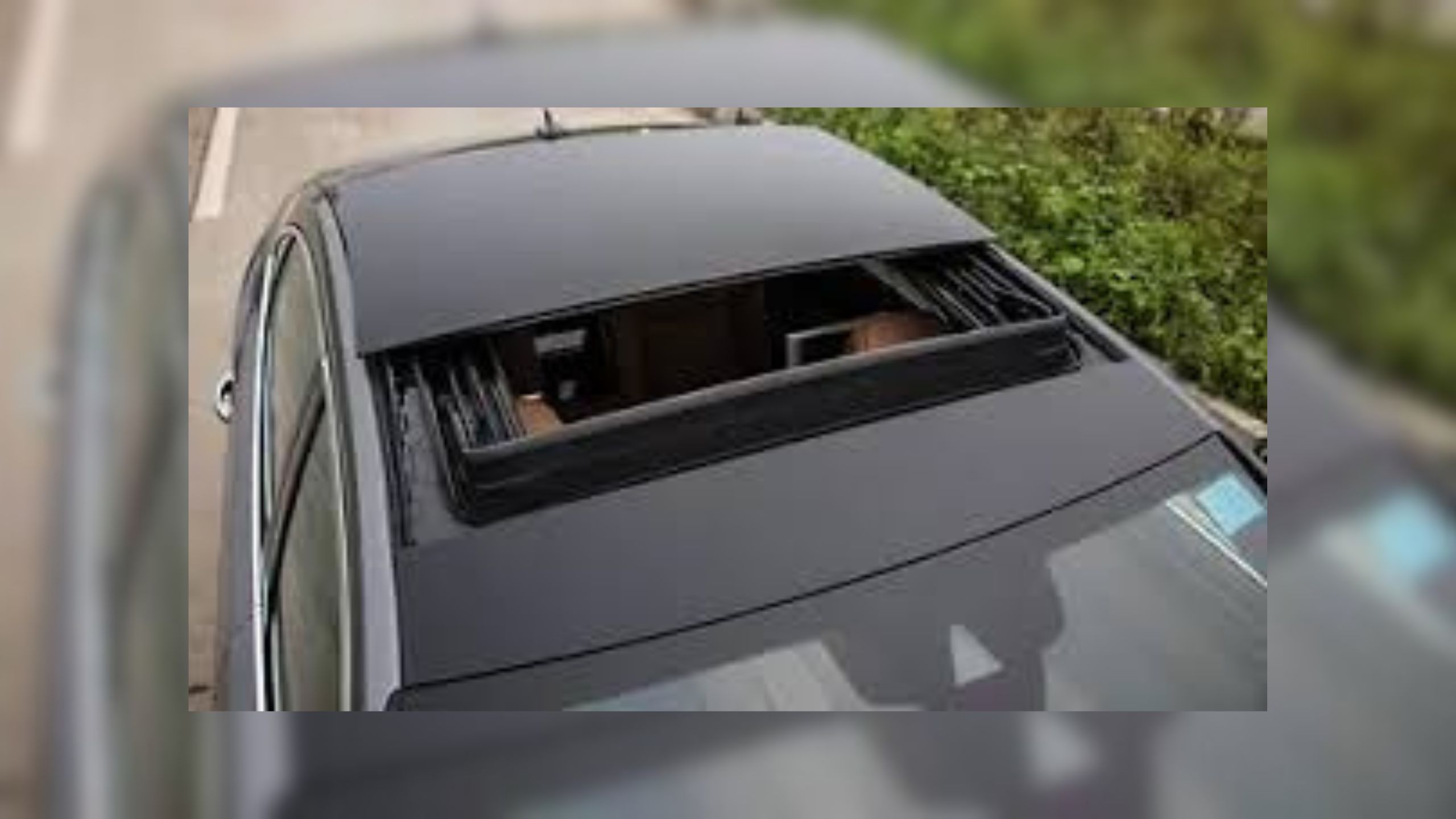
Climate control integration represents Audi’s most significant innovation. The four-zone system includes dedicated temperature sensors, individual air distribution controls, and coordinated operation with the vehicle’s main HVAC system.
Occupants can customize their environment while the system automatically compensates for solar heat gain and outside temperature variations. This capability makes the sunroof practical in extreme climates where traditional systems would be unusable.
Motor and control system sophistication exceeds typical automotive applications. Audi utilizes multiple servo motors with integrated position feedback and load sensing capabilities.
The control system monitors environmental conditions, vehicle speed, and occupant preferences to optimize operation automatically. Advanced algorithms predict maintenance requirements and alert owners before issues develop into failures.
Quality assurance includes comprehensive testing protocols that simulate years of service in accelerated timeframes. Each sunroof system undergoes individual testing for water intrusion, thermal cycling, vibration resistance, and electrical system performance.
The testing sequence includes extreme condition simulations that exceed real-world requirements by significant margins. Field performance data validates Audi’s engineering investment.
Warranty claim rates remain exceptionally low despite the system’s complexity, and customer satisfaction surveys consistently rate the climate sunroof as a standout feature. Independent reliability studies confirm the system’s durability, with many examples showing perfect performance after hundreds of thousands of miles of service.
Also Read: 5 Serpentine Belts That Last Forever And 5 That Constantly Squeal
5. Lexus LS Hybrid Whisper-Quiet Panoramic Roof
Lexus has built their reputation on refined luxury experiences, and their LS sedan’s panoramic sunroof system exemplifies this philosophy through whisper-quiet operation and exceptional reliability.
The system’s development focused on eliminating the common complaints associated with sunroofs: wind noise, water leaks, and mechanical failures.
Acoustic engineering drives many of Lexus’s design decisions. Traditional sunroofs can significantly increase wind noise due to air turbulence around panel edges and imperfect sealing.
Lexus engineers developed a comprehensive approach that addresses noise generation, transmission, and cabin acoustics to maintain their signature quiet cabin environment.
The glass specification includes acoustic lamination that reduces noise transmission by up to 30% compared to conventional automotive glass. The laminated construction incorporates a specialized interlayer that dampens vibrations while maintaining optical clarity.
The glass edges feature precision polishing that eliminates irregularities that could generate wind noise or compromise sealing effectiveness. Frame design emphasizes both structural integrity and acoustic isolation.
Lexus utilizes a multi-piece frame construction that includes vibration damping materials at critical connection points. The frame geometry creates smooth airflow transitions that minimize turbulence, while integrated wind deflectors reduce noise without compromising the system’s clean appearance.
Advanced computer modeling optimized the frame shape for minimal aerodynamic disturbance. Sealing technology represents Lexus’s most significant achievement in sunroof design. Their engineers developed a progressive compression seal that increases sealing force as wind speed rises.
This dynamic sealing system automatically adjusts to driving conditions, maintaining perfect sealing at highway speeds while preventing excessive compression during low-speed operation. The seal material includes specialized additives that maintain flexibility in extreme temperatures while resisting ozone degradation.
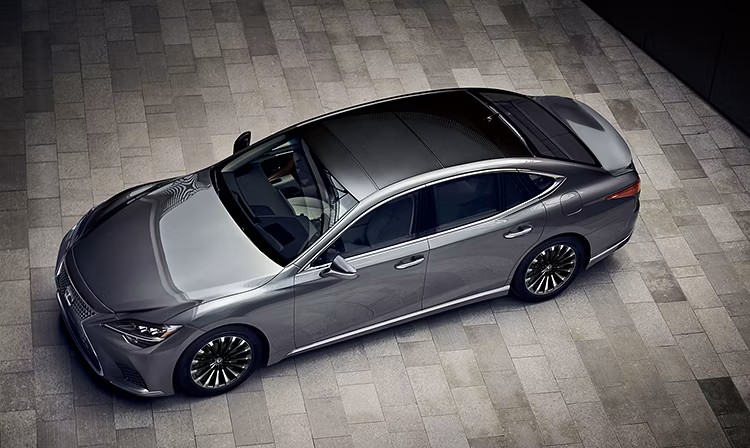
The drainage system design reflects Lexus’s attention to detail and long-term reliability. Drainage channels feature smooth, curved transitions that promote water flow while preventing debris accumulation.
Channel capacity calculations include significant safety margins that accommodate extreme weather conditions. Multiple drain exit points prevent backup if individual drains become restricted, and the system includes inspection ports that facilitate maintenance.
Motor and control system development prioritizes smooth, quiet operation over speed. Lexus utilizes specially developed motors with advanced noise isolation and vibration damping.
The motors operate at variable speeds, moving slowly during sealing transitions to prevent noise and seal damage. Control algorithms include adaptive features that compensate for component wear and environmental conditions.
Manufacturing quality control begins with supplier selection and continues through final vehicle assembly. Lexus requires suppliers to meet stringent quality standards that often exceed industry norms.
Component inspection includes dimensional verification, material property testing, and noise measurement. Final assembly follows detailed procedures with specific torque requirements and operational verification.
Lexus has implemented advanced diagnostic capabilities that monitor the sunroof system’s health continuously. The vehicle’s computer system tracks motor performance, position accuracy, and seal condition to identify developing issues before they affect performance.
This predictive maintenance approach has significantly reduced warranty claims and improved customer satisfaction. Long-term reliability data confirms the LS sunroof’s exceptional performance.
Independent studies show leak rates well below industry averages, with most issues attributed to maintenance neglect rather than design deficiencies.
Customer satisfaction surveys consistently rate the sunroof’s quiet operation and reliability as outstanding, and resale value analysis shows no depreciation penalty for vehicles equipped with the panoramic roof option.
5 Sunroofs That Ruin Headliners
These problematic roof systems develop catastrophic seal failures within just a few years, often beginning with minor dripping before progressing to complete water intrusion that destroys expensive interior components.
Their inadequate drainage designs and fragile sealing materials create perfect conditions for moisture accumulation, particularly around corners where pooled water eventually finds its way into the passenger compartment.
Owners report the devastating discovery of soaked headliners, ruined electronics, and musty odors that signal extensive water damage, often accompanied by repair estimates that exceed the vehicle’s remaining value.
What should be a luxury feature instead becomes a financial nightmare, with many frustrated owners facing insurance claims or complete interior replacement after experiencing the cascading damage these failing sunroofs inflict.
1. Ford Explorer (2011-2019) Panoramic Vista Roof
Ford’s Explorer panoramic sunroof represents one of the automotive industry’s most documented sunroof failures, affecting hundreds of thousands of vehicles and generating numerous class-action lawsuits.
The system’s problems stem from fundamental design flaws that prioritize manufacturing cost over long-term reliability, creating a cascading series of failures that typically destroy vehicle interiors.
The primary failure point begins with inadequate drainage system design. Ford engineers significantly underestimated drainage requirements for the large panoramic opening, creating channels with insufficient capacity for normal rainfall conditions.
The drainage channels feature sharp bends and narrow restrictions that promote debris accumulation and clogging. When channels become blocked, water overflows into the cabin rather than following backup drainage paths.
Seal quality represents another critical failure mode. Ford specified rubber seals with inadequate durometer ratings that become hard and brittle after exposure to temperature cycling and UV radiation.
The seal profiles lack the complex geometry found in premium systems, relying on simple compression rather than multiple sealing stages. As seals age, they lose their ability to conform to glass surfaces, creating gaps that allow water intrusion.
The glass installation process contributes significantly to long-term problems. Ford’s assembly procedures lack the precision found in premium manufacturers, with dimensional tolerances that allow significant variation in glass positioning.
Poor glass alignment creates uneven seal compression that accelerates wear and creates preferential leak paths. The assembly process also fails to include adequate quality control testing that would identify problems before vehicles leave the factory.
Frame construction utilizes cost-optimized materials and manufacturing processes that compromise long-term durability. The sunroof frame consists of stamped steel components with welded joints that can separate over time due to thermal stress and structural loading.
The frame geometry includes sharp corners and inadequate radii that concentrate stress and promote crack initiation. Corrosion protection relies on basic coating systems that fail prematurely in harsh environments.

The motor and control system design prioritizes initial cost over reliability and serviceability. Ford utilizes basic DC motors without position feedback or load sensing capabilities.
The control system lacks sophisticated protection features found in premium systems, allowing continued operation even when excessive resistance indicates developing problems. This design philosophy often causes catastrophic failures that require complete system replacement.
Water damage typically begins subtly but accelerates rapidly once leaks develop. Initial water intrusion may be limited to small amounts during heavy rainfall, but deteriorating seals and clogged drains quickly worsen the situation.
Water damage progresses from surface staining to complete headliner replacement, electronic system failures, and structural corrosion. The panoramic roof’s large opening means that even small leaks can deposit significant water volumes into the cabin.
Ford’s response to widespread problems has been inadequate and inconsistent. While technical service bulletins acknowledge certain issues, the recommended repairs often address symptoms rather than root causes.
Warranty coverage frequently expires before problems become apparent, leaving owners with repair costs that can exceed the vehicle’s value. Independent repair shops often refuse sunroof work due to the high probability of recurring problems.
Legal consequences have been severe for both Ford and affected owners. Multiple class-action lawsuits have resulted in settlements, but compensation rarely covers complete repair costs or diminished vehicle values.
Many owners face impossible choices between expensive repairs and total vehicle loss. The Explorer’s sunroof problems have become so well-known that they significantly impact resale values even for vehicles without current leak issues.
Long-term reliability data confirms the Explorer panoramic roof as one of the industry’s worst performers. Independent studies show leak rates exceeding 25% within five years, with failure rates continuing to increase as vehicles age.
Customer satisfaction surveys consistently rate the sunroof system as the Explorer’s most problematic feature, and automotive reliability organizations specifically warn potential buyers about sunroof-related issues.
2. Nissan Murano (2015-2022) Dual-Panel Moonroof
Nissan’s dual-panel moonroof system in the Murano demonstrates how cost-cutting measures and inadequate engineering validation can transform a potentially reliable design into a consistent source of problems.
The system’s failures typically manifest within the first few years of ownership, often progressing from minor leaks to complete interior destruction.
The fundamental design flaw centers on the drainage system. Nissan engineers created a drainage system that appears adequate on paper but fails catastrophically in real-world conditions.
The drainage channels feature multiple sharp bends that create turbulence and promote debris accumulation. Channel sizing calculations failed to account for actual rainfall rates and debris loading, resulting in frequent overflow conditions that direct water into the cabin.
Seal selection and quality represent major failure modes in the Murano system. Nissan specified low-cost rubber seals that lack the material properties necessary for automotive applications.
The rubber compound becomes hard and brittle after minimal UV exposure, losing its ability to conform to glass surfaces. Temperature cycling accelerates seal degradation, with hot climates showing particularly rapid failure rates.
The seal profile design relies on basic compression rather than the sophisticated multi-lip designs found in reliable systems. Glass installation precision varies significantly between individual vehicles, creating inconsistent seal compression and premature wear patterns.
Nissan’s assembly procedures lack the detailed specifications and quality control measures necessary for precision sunroof installation. Workers receive minimal training on critical installation parameters, and quality control testing is limited to basic operational verification rather than comprehensive leak testing.
The frame structure utilizes thin-gauge steel with minimal corrosion protection that fails prematurely in normal service conditions. Frame components show evidence of inadequate structural analysis, with stress concentrations that promote crack initiation and propagation.
The frame geometry includes design features that trap water and promote corrosion, accelerating structural degradation and seal failure.
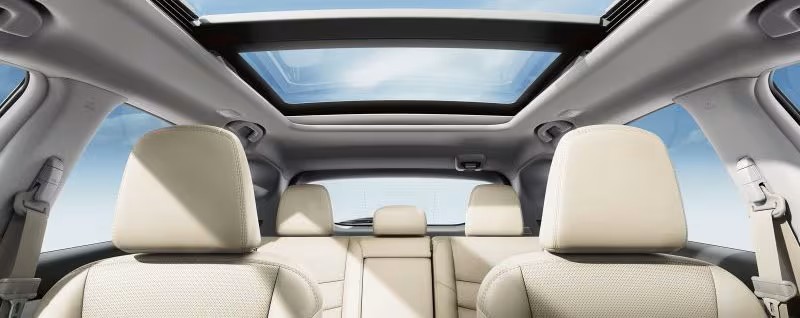
Motor and control system design emphasizes low cost over reliability and user experience. The motors lack position feedback and operate at fixed speeds that can damage seals during operation.
Control system programming includes no adaptive features to compensate for component wear or environmental conditions. Safety features are minimal, with basic obstacle detection that often fails to prevent damage from foreign objects or ice formation.
Water damage progression follows a predictable pattern that typically results in total interior loss. Initial leaks may be minor, but rapid seal degradation and drainage system failures quickly escalate the situation.
The dual-panel design creates multiple potential leak points, and failure of either panel typically leads to widespread water damage. Nissan’s interior materials show particular susceptibility to water damage, with headliners, seat cushions, and electronic components failing rapidly after water exposure.
Nissan’s technical support and warranty response have been notably inadequate given the widespread nature of the problems. Technical service bulletins often recommend temporary repairs that fail to address root causes.
Warranty coverage interpretation varies between dealers, with many legitimate claims denied due to narrow coverage definitions. Repair procedures often require complete sunroof system replacement, but new systems typically fail with similar patterns.
The cost implications for Murano owners extend far beyond simple repair expenses. Water damage often affects multiple vehicle systems, including electronics, HVAC components, and structural elements. Insurance companies may declare vehicles total losses due to extensive water damage, but settlements rarely reflect pre-damage values.
Owners who attempt repairs often face recurring problems that make their vehicles essentially worthless. Independent testing and owner surveys confirm the Murano moonroof as among the least reliable in its class.
Failure rates exceed 30% within three years of ownership, with problem severity increasing rapidly as vehicles age. Customer satisfaction ratings consistently identify the sunroof as the vehicle’s most problematic feature, and automotive consumer organizations specifically warn potential buyers about known issues.
3. Jeep Grand Cherokee (2014-2021) CommandView Dual-Pane Sunroof
Jeep’s CommandView sunroof system represents a particularly frustrating example of how poor engineering execution can transform an appealing concept into a reliability nightmare.
The system’s problems are compounded by Jeep’s off-road heritage, which attracts buyers who expect robust, reliable performance in challenging conditions.
The drainage system design demonstrates a fundamental misunderstanding of water management principles in automotive applications. Jeep engineers created a drainage system with insufficient capacity and poor routing that virtually guarantees overflow during normal rainfall conditions.
The drainage channels include multiple restrictions and sharp direction changes that promote clogging from debris that commonly accumulates on vehicles used in outdoor activities. When drainage fails, the large dual-pane opening directs substantial water volumes directly into the cabin.
Seal quality and design represent major engineering failures that affect virtually all CommandView systems. Jeep specified rubber seals that lack the chemical composition necessary for long-term automotive service.
The seals show rapid degradation when exposed to UV radiation, ozone, and temperature cycling typical of normal vehicle use. The seal profile design utilizes outdated single-compression concepts rather than modern multi-stage sealing systems, creating inadequate barriers against water intrusion.
The glass installation process lacks the precision necessary for reliable sunroof operation. Jeep’s assembly procedures include wide dimensional tolerances that allow significant variation in glass positioning and seal compression.
Quality control testing is limited to basic operational checks rather than comprehensive leak testing under various conditions. This approach allows defective systems to reach customers, where problems typically manifest during the first significant rainfall.
Frame construction utilizes cost-optimized materials and processes that compromise long-term durability and corrosion resistance. The frame components consist of thin-gauge steel with basic corrosion protection that fails rapidly when exposed to road salt and environmental conditions.
Structural analysis appears inadequate, with stress concentrations that promote fatigue cracking and joint separation. The frame geometry includes features that trap water and debris, accelerating corrosion and creating additional leak paths.

Motor and control system design prioritizes initial cost over long-term reliability and customer satisfaction. Jeep utilizes basic motor systems without sophisticated position feedback or load monitoring capabilities.
The control programming lacks adaptive features that could compensate for component wear or environmental conditions. Protection systems are minimal, often allowing continued operation even when excessive resistance indicates developing mechanical problems.
The off-road capability expectation creates additional challenges for the CommandView system. Jeep customers often subject their vehicles to conditions that exceed typical automotive environments, including dust, mud, extreme temperatures, and physical impacts.
The sunroof system’s design provides inadequate protection against these conditions, with seals and drainage systems that fail rapidly when exposed to off-road environments.
Water damage typically progresses rapidly from initial leaks to complete interior destruction. The CommandView system’s large opening means that even minor seal failures can admit substantial water volumes during rainfall.
Jeep’s interior materials show particular susceptibility to water damage, with headliners disintegrating and electronic systems failing after minimal water exposure. The vehicle’s electrical architecture lacks adequate water protection, leading to cascading failures that affect multiple vehicle systems.
Jeep’s warranty and service response have been inconsistent and often inadequate, given the widespread nature of CommandView problems. Technical service bulletins acknowledge certain issues but often recommend repairs that fail to address fundamental design problems.
Warranty interpretation varies significantly between dealers, with many legitimate claims denied due to restrictive coverage definitions. Repair costs often exceed reasonable proportions of vehicle value, particularly for older vehicles.
Legal and financial consequences have been severe for affected owners. Multiple class-action lawsuits have documented widespread problems, but settlements rarely provide adequate compensation for actual damages.
Insurance companies often refuse coverage for sunroof-related water damage, classifying it as maintenance-related rather than covered losses. Resale values for CommandView-equipped vehicles suffer significant penalties due to known reliability issues.
Long-term reliability data confirms the CommandView system as one of the industry’s poorest performers. Independent studies document failure rates exceeding 35% within four years, with problem severity increasing as vehicles age.
Customer satisfaction surveys consistently identify the sunroof as the Grand Cherokee’s most problematic feature, and automotive reliability organizations specifically caution potential buyers about CommandView-related issues.
4. Lincoln MKC (2015-2019) Vista Roof System
Lincoln’s Vista Roof system exemplifies how luxury brand aspirations can be undermined by fundamental engineering compromises and inadequate quality control.
The system’s problems are particularly damaging to Lincoln’s premium brand positioning, as customers expect better reliability from luxury vehicles. The drainage system design reveals cost-cutting measures that prioritize manufacturing efficiency over long-term performance.
Lincoln engineers created drainage channels with inadequate cross-sectional area and poor routing that cannot handle normal rainfall volumes. The channels include multiple sharp bends and restrictions that promote debris accumulation and complete blockage.
When drainage fails, the Vista Roof’s large opening creates a waterfall effect that rapidly saturates interior components. Seal specification and quality represent major engineering failures that affect the majority of Vista Roof systems.
Lincoln selected rubber compounds that lack the sophisticated additives necessary for long-term automotive service. The seals show rapid hardening and cracking when exposed to normal environmental conditions, particularly in regions with significant temperature variations.
The seal profile design utilizes simple compression geometry rather than advanced multi-lip configurations found in reliable luxury systems. Glass installation procedures lack the precision expected in luxury vehicle manufacturing.
Lincoln’s assembly process includes dimensional tolerances that allow significant variation in glass positioning and seal compression. Worker training appears inadequate for the precision required in sunroof installation, and quality control procedures focus on basic operational testing rather than comprehensive leak verification.
This approach allows defective systems to reach customers, where problems typically appear during the first major rainstorm. Frame construction demonstrates cost optimization at the expense of long-term durability and corrosion resistance.
The frame utilizes thin-gauge steel components with basic corrosion protection that fails prematurely in normal service conditions. Structural design appears inadequate, with stress concentrations that promote fatigue cracking and joint failure. The frame geometry includes design elements that trap moisture and promote corrosion, creating additional failure modes.

Motor and control system design emphasizes low cost over the refined operation expected in luxury vehicles. Lincoln utilizes basic motor systems without the sophisticated position feedback and adaptive control found in competitive luxury systems.
The control programming lacks features that could provide smooth operation and protect components from damage. Safety systems are minimal, with basic obstacle detection that often fails to prevent damage from ice formation or debris.
The luxury market expectation creates additional challenges for Vista Roof’s reliability. Lincoln customers expect flawless operation and long-term durability that justifies premium pricing.
When problems develop, customer satisfaction suffers disproportionately compared to mainstream brands. The contrast between luxury positioning and actual reliability performance creates significant brand damage that affects Lincoln’s overall reputation.
Water damage progression typically follows an accelerated pattern due to the Vista Roof’s large opening and inadequate drainage capacity. Initial leaks may appear minor, but rapid seal degradation and drainage system failures quickly escalate problems.
Lincoln’s interior materials, while initially premium, show particular susceptibility to water damage, with expensive components failing rapidly after water exposure.
Electronic system integration, a luxury vehicle selling point, becomes a liability when water intrusion affects multiple connected systems. Lincoln’s warranty and service response have been particularly disappointing given the brand’s luxury positioning.
Technical service bulletins often acknowledge problems but recommend repairs that fail to address fundamental design issues. Warranty coverage interpretation varies significantly between dealers, with many legitimate claims disputed or denied.
Repair costs often exceed reasonable expectations for luxury vehicle ownership, creating significant customer dissatisfaction. The financial impact on MKC owners extends beyond simple repair costs to include diminished resale values and potential total vehicle loss.
Water damage often affects multiple expensive systems, including electronics, premium interior components, and structural elements. Insurance companies may declare vehicles total losses, but settlements rarely reflect the premium paid for luxury features.
Owners who attempt repairs often face recurring problems that make their vehicles essentially unmarketable. Independent reliability studies and customer surveys consistently identify the Vista Roof as the MKC’s most problematic feature. Failure rates exceed 40% within three years, with problem severity increasing rapidly as vehicles age.
Luxury vehicle customer satisfaction surveys show particularly negative ratings for Vista Roof reliability, and automotive consumer organizations specifically warn potential buyers about known issues that contradict Lincoln’s luxury positioning.
5. Hyundai Tucson (2016-2021) Panoramic Sunroof System
Hyundai’s panoramic sunroof system in the Tucson represents a textbook example of how aggressive cost targets can undermine potentially sound engineering concepts.
The system’s problems are particularly troubling given Hyundai’s general reputation for reliability and their extensive warranty coverage, which has failed to adequately address fundamental design deficiencies.
The drainage system design demonstrates insufficient engineering analysis and validation testing. Hyundai engineers created a drainage system that appears adequate in controlled conditions but fails consistently in real-world applications.
The drainage channels feature inadequate capacity margins and poor routing that cannot accommodate normal debris loading and seasonal variations.
Channel geometry includes sharp transitions and narrow sections that promote clogging from leaves, dirt, and other common contaminants. Seal quality represents a major cost-driven compromise that affects long-term reliability.
Hyundai specified low-grade rubber seals that lack the advanced additives necessary for extended automotive service. The seal material shows rapid degradation when exposed to UV radiation and ozone, common environmental factors in normal vehicle operation.
Temperature cycling accelerates seal failure, with the rubber becoming hard and brittle, losing its ability to maintain effective contact with glass surfaces.
The glass installation process lacks the precision control necessary for reliable sunroof operation. Hyundai’s assembly procedures include wide dimensional tolerances that allow significant variation in critical parameters such as glass position and seal compression.
Quality control testing focuses on basic operational verification rather than comprehensive leak testing under various environmental conditions. This approach allows marginal systems to pass inspection, with problems manifesting when customers encounter their first significant rainfall.
Frame construction utilizes minimum-cost materials and manufacturing processes that compromise long-term structural integrity. The sunroof frame consists of thin-gauge steel with basic corrosion protection that fails prematurely when exposed to road salt and environmental moisture.
Structural design appears to prioritize manufacturing cost over durability, with inadequate reinforcement in high-stress areas and poor joint design that promotes fatigue cracking.
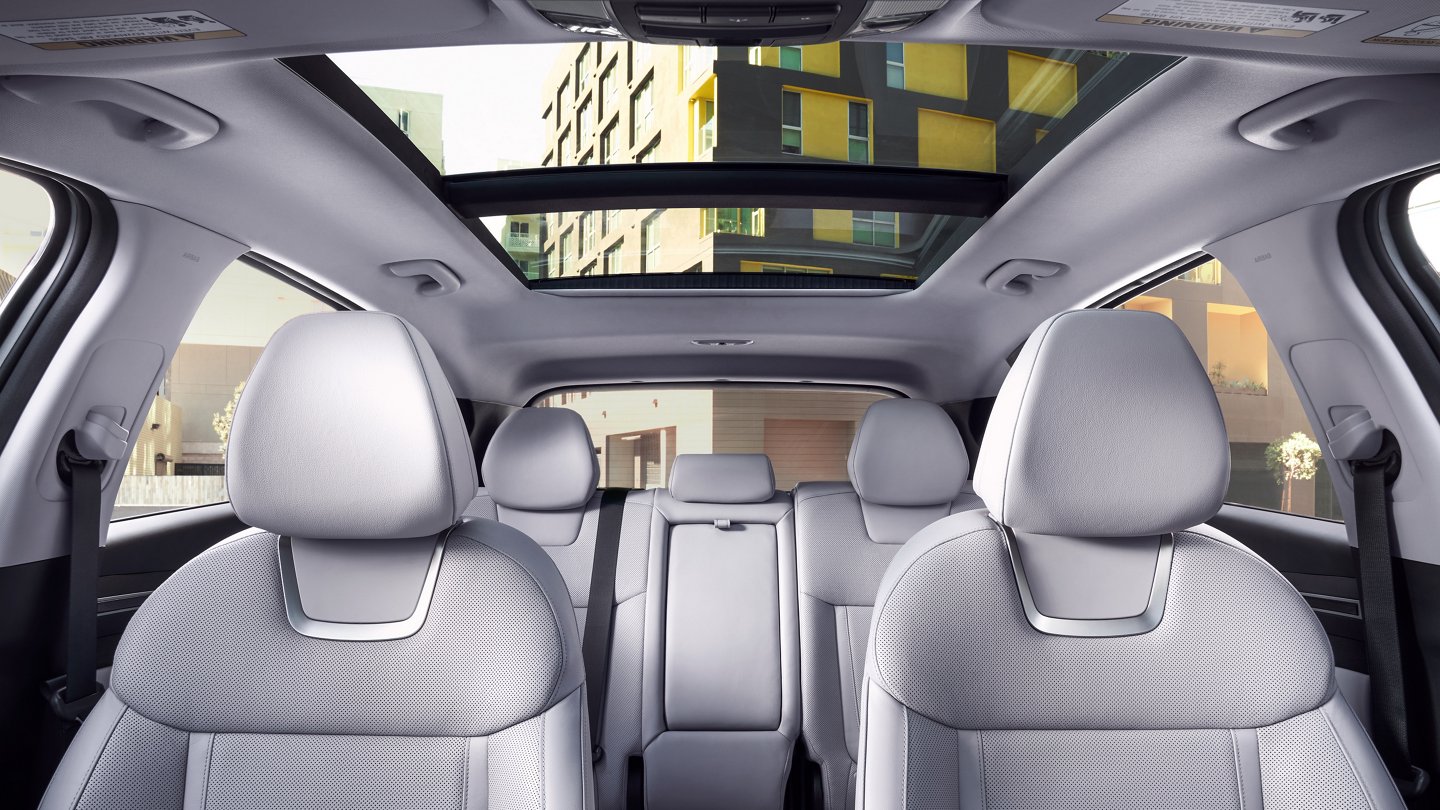
Motor and control system design emphasizes initial cost over long-term reliability and user satisfaction. Hyundai utilizes basic DC motors without position feedback or sophisticated control algorithms.
The system lacks adaptive features that could compensate for component wear or environmental conditions. Protection features are minimal, with basic overcurrent protection that often fails to prevent damage from ice loading or mechanical obstructions.
The warranty coverage paradox creates additional frustration for Tucson owners. While Hyundai offers extensive warranty coverage, sunroof-related problems often fall into coverage gaps or are attributed to maintenance issues rather than design defects.
Warranty claims frequently require multiple dealer visits and extensive documentation, with final coverage decisions often disappointing customers who expected comprehensive protection.
Water damage typically begins with minor leaks during heavy rainfall but progresses rapidly as seals deteriorate and drainage systems fail. The panoramic sunroof’s large opening means that even small seal failures can admit substantial water volumes.
Hyundai’s interior materials show moderate water resistance initially, but prolonged exposure leads to headliner failure, seat damage, and electronic system problems.
The vehicle’s electrical architecture provides inadequate water protection, leading to cascading failures affecting multiple systems. Hyundai’s technical support and repair approach often fails to address the root causes of sunroof problems.
Technical service bulletins typically recommend component replacement rather than system redesign, leading to recurring failures with similar patterns.
Dealer technician training appears inadequate for complex sunroof diagnosis and repair, resulting in multiple unsuccessful repair attempts. Parts availability can be problematic, with extended wait times for specialized sunroof components.
The cost implications for Tucson owners often exceed expectations based on the vehicle’s initial purchase price and warranty coverage. Water damage frequently affects expensive electronic systems and interior components, with repair costs that can approach the vehicle’s value.
Insurance coverage for sunroof-related damage is often limited or denied, classifying problems as maintenance-related rather than covered losses. Resale values suffer significant penalties due to known reliability issues and potential buyer awareness of sunroof problems.
Independent reliability studies confirm the Tucson panoramic sunroof as among the least reliable in its market segment. Documented failure rates exceed 30% within four years of ownership, with failure severity increasing as vehicles age.
Customer satisfaction surveys consistently identify the sunroof system as a major source of owner dissatisfaction, contradicting Hyundai’s general reliability reputation.
Automotive consumer organizations have issued specific warnings about Tucson sunroof problems, advising potential buyers to avoid the panoramic sunroof option or budget for likely repair costs.
Also Read: 5 Gloveboxes That Never Break And 5 With Failing Latches

